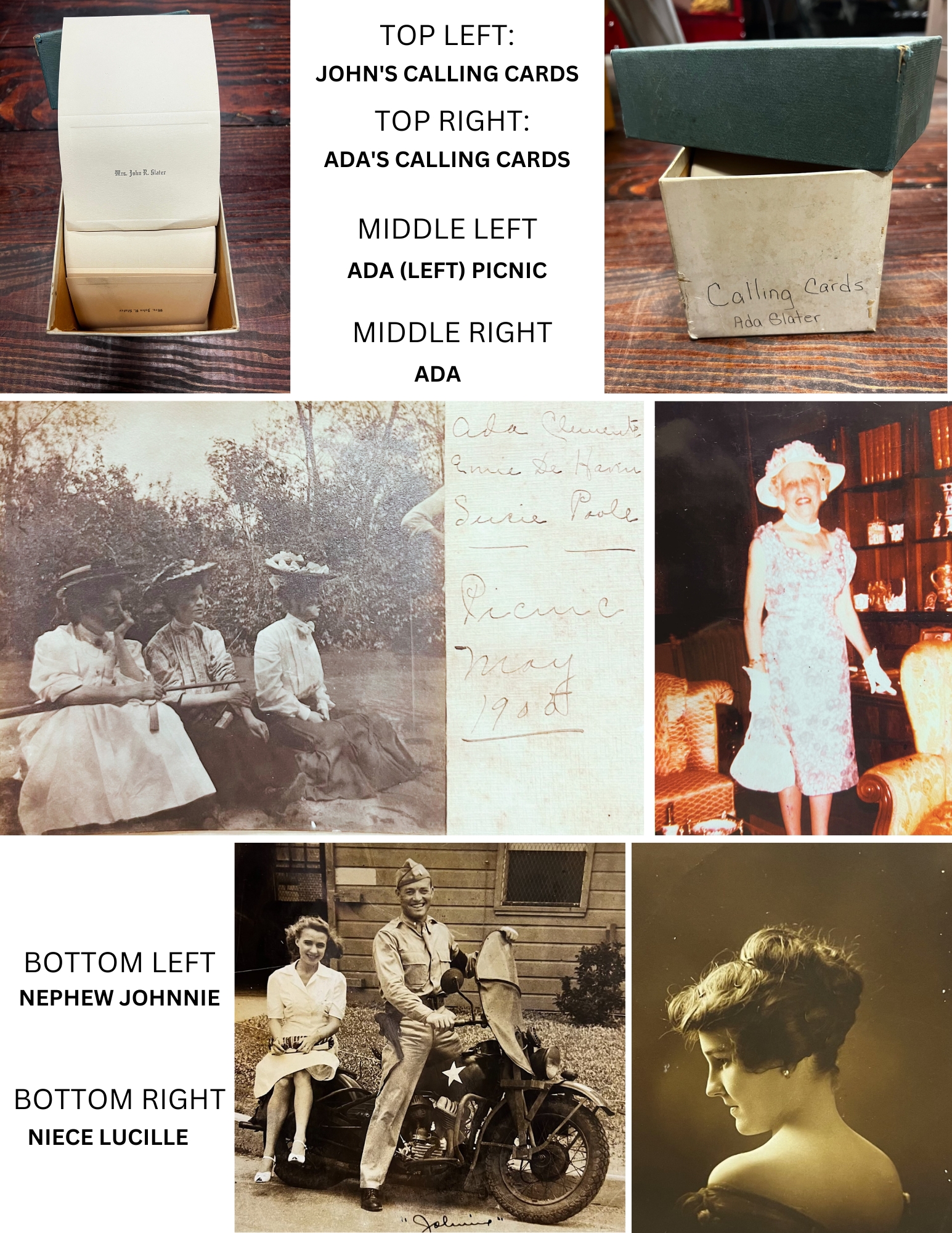by Caitlin Wolfe
DouglasNow.com
As one can only imagine, the tragic death of Ada’s first husband and son were enough to send almost anyone over the edge. Now, she has lost her second husband in a devastating series of events.
While the time of losing John Slater was surely mournful, Ada doesn’t give up. She has now regained control of the business and financial affairs, became even more family oriented, and it seems as if by the 1950’s Ada has found her groove and doesn’t plan to remarry.
It’s in the 50’s that she starts to travel again. We’re not talking about just a quick trip to Florida or a couple of states over. No, not Ada Slater. During this time, she was taking lengthy cruises to places like Italy, France, England, the Caribbean, Germany, and Central and South Africa. On these trips, she would often take a sister or niece to accompany her.
At one point during the lives of her nieces and nephews, she even sold what we now know as the Martin Theater to the Martin Theater Group. However, she will only sell it to them under one condition. Her nieces and nephews will have full admittance to the shows, food, and drinks. All for free. This was Ada’s way of gaining total and undisturbed access to play bridge at her Gaskin Avenue home.
Yes, to the surprise of many, not only did Ada play bridge religiously, but she was astounding at it. For those of you who don’t know, bridge is a trick-taking card game, typically having 2 sets of partners who play against each other. During the 50’s and 60’s, you’d often see her and a close friend playing bridge together in the beautiful Ashley-Slater home.
This home was a beauty on the inside as well as the outside. With stunning brick and breathtaking gardens, there were quite literally no other homes like it on Gaskin. It’s often noticed in most old homes that the upstairs is more plain and simple, while the social rooms were extravagant. This also held true for the Ashley-Slater House. Ada’s home garden was known for its tall palm trees and dazzling azaleas. A fun fact that not many know is the azaleas that were planted at the home were the first to ever be planted in Douglas. This of course started what we would call today, a trend. Other families in town quickly began planting these beautiful flowers thanks to Ada.
The last few years of her life in the house were spent upstairs in her bedroom. While downstairs, most of the furniture had been covered in sheets due to the lack of use. The dining room table where Ada and her niece once sat discussing plans for New York, the couches and chairs that once held guests at extravagant parties, the sun porch that was once home to sweet little tea parties with her sisters and friends, now sat vacant. Older in age and in declining health, Ada remained upstairs in her bedroom.
It was on December 9, 1972 that Ada sadly passed away at the age of 91. Before she died, Ada decided to leave the house to one of her nephews. However, this would be under one condition. Her stipulation was that her nephew and his wife would have to actually live in the house for at least a year. It has been said that the wife and Ada did not get along very well, so his wife would not live there for any period of time. Unfortunately, this left the house empty for several years.
Through the 80s, the house was occupied. But that didn’t last and it wasn’t long before it was vacant again. In 1994, a local group of community oriented citizens purchased the home with hopes of preventing it from withering away. The plan was to hold onto the home until the city of Douglas could get a grant to properly fix it and put it to use again. In order for this plan to work, they had to guarantee a $125,000 note to the bank and they did just that. In July of 1997, the once vacant, quiet, and dust filled home became the Welcome Center when the city was finally able to purchase the property. This takes us full circle to the beginning of part 1. Over the next several years after the city had purchased the Ashley-Slater House, it was the Welcome Center, the Chamber of Commerce, but most importantly, it was history. This remarkable home holds the memories of many fancy dinner parties, a family who experienced true heartbreak, and a woman who lived her life to the fullest even when life wasn’t kind to her in return.
Now the question becomes, if only those walls could talk, what other fascinating stories would we learn about the famous Ashley-Slater House?







